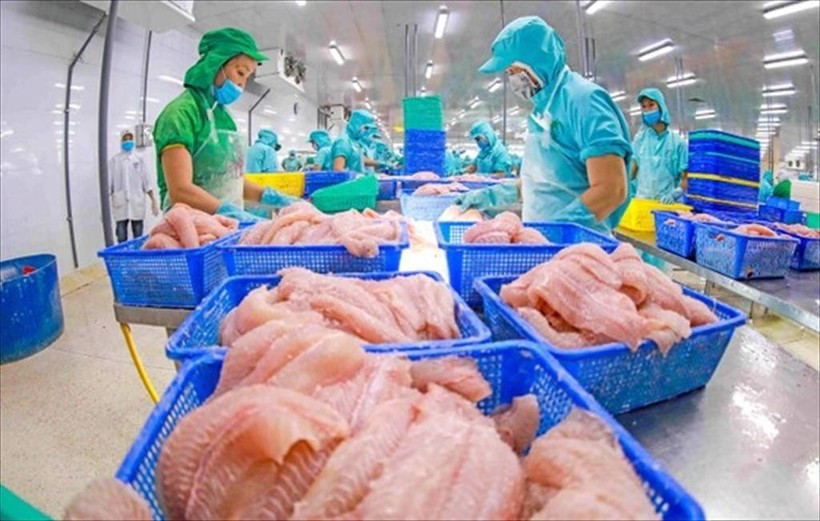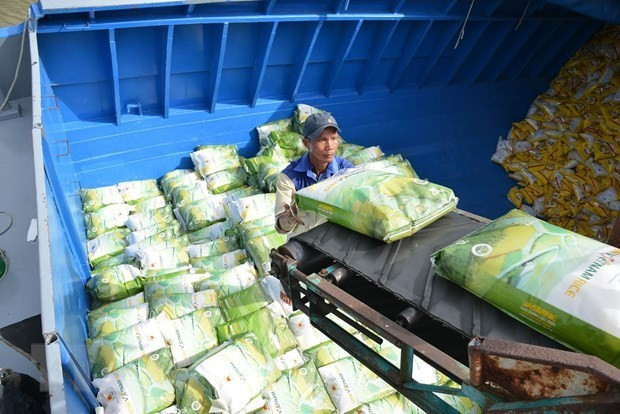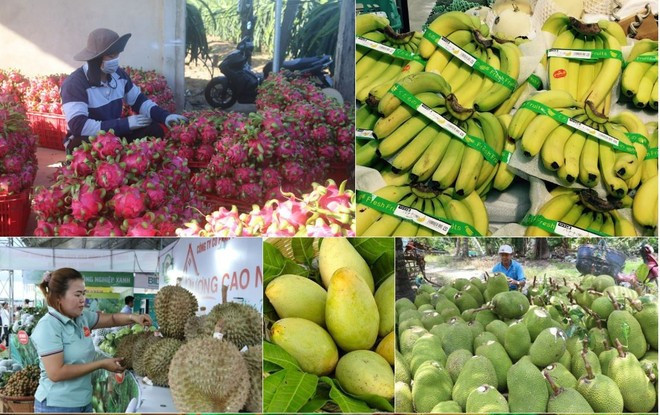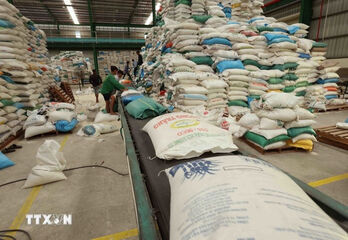
Workers process tra fish for export. (Photo: VietnamPlus)
This represents a decline of around 1.6 billion USD, should retaliatory tariffs come into effect.
In response, the sector is rolling out drastic measures to maintain momentum in traditional markets while diversifying product lines to boost growth in emerging markets, aiming to meet the export target of 65 billion USD for the whole year.
Strong H1 performance despite challenges
Despite global market fluctuations and other headwinds, Vietnam’s agricultural exports delivered a strong performance in the first half of 2025. Total agro-forestry-aquatic exports reached 33.84 billion USD, up 15.5% year-on-year, with a trade surplus of 9.83 billion USD — an increase of 16.5%. These figures reflect the rising global competitiveness of Vietnamese agricultural products.
By export category, agricultural products brought in 18.3 billion USD (up 16.8%), seafood 5 billion USD (up 14.5%), forestry products 8.7 billion USD (up 8.8%), and livestock 264 million USD (up 10.1%).
Nine out of eleven key product groups posted positive growth, including coffee, rubber, pepper, cashew nuts, livestock, seafood, and wood products — a promising signal amid continued global economic volatility.
In contrast, rice exports fell 9.8% to 2.6 billion USD, and fruit and vegetable exports dropped 17.1% to 2.7 billion USD. These categories will require urgent interventions to reverse the downward trend in the months ahead.

Rice exports in the first six months of the year only reach 2.6 billion USD, down 9.8% compared to the same period last year. (Photo: VietnamPlus)
Deputy Minister of Agriculture and Environment Phung Duc Tien noted a significant shift in export market structures. In 2024, exports to the US and China were nearly equal, accounting for 21.8% and 21.6%, respectively. However, in the first half of 2025, the US led with 7.14 billion USD (21.1%), while China fell to 5.94 billion USD (17.6%). Japan followed with 2.44 billion USD (7.2%).
This trend, according to the Deputy Minister, necessitates a strategic realignment of trade promotion efforts and market expansion. The ministry is actively pursuing new opportunities for key export items such as coffee, rice, fruit, pangasius, and shrimp, including a recent agreement with Brazil on beef exports and the potential for Vietnamese tra (pangasius), coffee, and rice to this South American market.
Market expansion
The Ministry of Agriculture and Environment sketched out a roadmap for the remainder of the year, targeting 14–15 billion USD in Q3 and at least 16 billion USD in Q4, capitalising on the rising demand for agricultural products during the year-end holiday season.

The agricultural sector is expanding markets and diversifying export products. (Photo: VietnamPlus)
The ministry is focusing on market expansion, product diversification, and full utilisation of the country’s 17 signed free trade agreements (FTAs), both bilateral and multilateral. Products with strong growth potential, such as coffee, cashew nuts, shrimp, fish, and specialty fruits, will receive increased support through trade promotion and standardisation of production to meet stringent quality requirements from markets like the US, EU, and China. At the same time, the ministry is encouraging exploration of potential markets in the Middle East, ASEAN, and Latin America.
Looking toward long-term growth, Deputy Minister Tien emphasised the central role of science, technology, and innovation in shifting from extensive to intensive agricultural development models. The sector is committed to sustainability, ensuring environmental protection, economic efficiency, and social equity.
Institutional reform is also being fast-tracked. The government has introduced new decrees to decentralise management and streamline administrative procedures, enabling greater local autonomy and innovation. The MAE is currently reviewing and proposing revisions to specialised laws to institutionalise new development policies and create a more transparent and effective legal framework for agriculture./.
VNA
Source: https://en.vietnamplus.vn/vietnams-agro-forestry-aquatic-exports-eye-65-billion-usd-in-revenue-in-2025-post323265.vnp
 Vietnam's exports maintain robust growth amid global challenges
Vietnam's exports maintain robust growth amid global challenges





